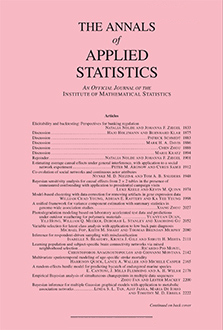Abstract
Missing attributes are ubiquitous in causal inference, as they are in most applied statistical work. In this paper we consider various sets of assumptions under which causal inference is possible despite missing attributes and discuss corresponding approaches to average treatment effect estimation, including generalized propensity score methods and multiple imputation. Across an extensive simulation study, we show that no single method systematically outperforms others. We find, however, that doubly robust modifications of standard methods for average treatment effect estimation with missing data repeatedly perform better than their nondoubly robust baselines; for example, doubly robust generalized propensity score methods beat inverse-weighting with the generalized propensity score. This finding is reinforced in an analysis of an observational study on the effect on mortality of tranexamic acid administration among patients with traumatic brain injury in the context of critical care management. Here, doubly robust estimators recover confidence intervals that are consistent with evidence from randomized trials, whereas nondoubly robust estimators do not.
Citation
Imke Mayer. Erik Sverdrup. Tobias Gauss. Jean-Denis Moyer. Stefan Wager. Julie Josse. "Doubly robust treatment effect estimation with missing attributes." Ann. Appl. Stat. 14 (3) 1409 - 1431, September 2020. https://doi.org/10.1214/20-AOAS1356
Information





